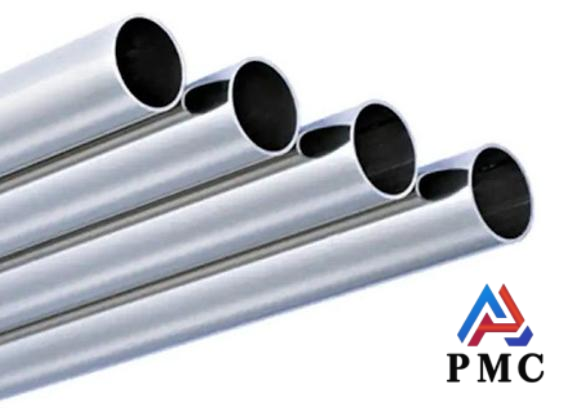
How to Maintain and Clean Stainless Steel Seamless Pipes?
The stainless steel seamless pipe is a pipe made of stainless steel and produced according to the manufacturing process of seamless steel tubes. It is a member of the seamless steel tube family and has the common characteristics of seamless steel tubes. At the same time, it has unique properties due to the stainless steel material.
Stainless steel seamless pipes are widely used in construction, chemical industry, energy, and other fields due to their high strength and corrosion resistance. With the advancement of science and technology and the improvement of technology, the application field of stainless steel seamless pipes will be further expanded, providing strong support for the development of more industries. So when using stainless steel seamless pipes, how should we maintain and clean stainless steel seamless pipes and how to properly store and transport stainless steel seamless pipes?
How to maintain and clean stainless steel seamless pipes?
1. General cleaning: You can use mild detergent and soft cloth or sponge to clean the surface of stainless steel seamless pipes. Avoid using abrasive or harsh cleaners that can scratch or damage the stainless steel surface.
2. Daily cleaning: Rinse the surface of the stainless steel seamless pipe with clean water every day to remove surface dust and dirt.
3. Remove stains: If there are stains on the stainless steel seamless pipe, you can use diluted white vinegar or lemon juice to remove them. Apply white vinegar or lemon juice to the stain, then wipe with a soft cloth until the stain is gone, then rinse with clean water.
4. Avoid scratches: The surface of stainless steel seamless pipes is easily scratched, so avoid using irritating items such as steel wool or hard brushes when cleaning.
5. Eliminate water stains: If there are water stains on the stainless steel seamless pipe, you can use diluted vinegar or alcohol to remove them. Apply vinegar or rubbing alcohol to the water stain and then wipe with a soft cloth until the stain is gone.
6. Long-term maintenance: Stainless steel seamless pipes can be maintained by applying special protective agents. These protectants can increase the luster of stainless steel and improve its corrosion resistance. Before applying the protective agent, please use it correctly according to the product instructions.
7. Avoid chemicals: Avoid direct contact of strong chemicals such as chemical solvents, acidic cleaners or corrosives with stainless steel seamless pipes to avoid damaging their surface.

How to properly store and transport stainless steel seamless pipes?
Stainless steel seamless pipes are widely used in various fields due to their excellent performance. However, their storage and transportation processes also require rigorous operations to ensure that the quality and performance of the pipes are not affected. The following is an explanation of how to properly store and transport stainless steel seamless pipes from multiple perspectives.
1. Storage method
(1) Environmental selection: Stainless steel seamless pipes should be stored in a dry, ventilated environment without corrosive gases. Avoid direct sunlight and rain to prevent oxidation or rust on the pipe surface.
(2) Stacking method: Pipes should be laid flat to avoid bending or deformation under pressure. When stacking, soft materials such as wood blocks or rubber pads should be used as support to reduce friction and damage between pipes.
(3) Labels and markings: Each pipe should have clear labels and markings indicating specifications, materials, production date and other information for easy management and use.
(4) Cleaning and maintenance: Clean the pipes regularly to remove dust and dirt on the surface. At the same time, check whether the pipe is damaged or rusted. If found, it should be dealt with in time.
2. Transportation method
(1) Packaging: Stainless steel seamless pipes should be properly packaged before transportation to protect the pipe surface from scratches or damage. Plastic film or wooden strips can be used to wrap or fix.
(2) Transportation: Choose a suitable transportation tool, such as a truck, forklift, etc. Ensure that the transportation tool is stable and safe, and avoid severe vibration or collision during transportation.
(3) Fixation and protection: During transportation, the pipe should be firmly fixed to the transport vehicle with ropes or fixing devices to prevent the pipe from sliding or rolling during transportation. At the same time, the protruding parts of the pipe should be wrapped with soft materials to reduce friction and damage during transportation.
(4) Precautions: During loading and unloading, the pipes should be handled with care and sharp tools or rough operation methods should be avoided to avoid damage to the pipes. At the same time, relevant safety regulations and operating procedures should be followed to ensure the safety of the transportation process.
3. Management and supervision
(1) Regular inspection: Regularly inspect the stainless steel seamless pipes during storage and transportation to ensure that their quality and performance meet the requirements.
(2) Record management: Establish a complete record management system to record the storage, transportation, and use of pipes for easy traceability and management.
(3) Training and guidance: Provide training and guidance to relevant personnel to improve their knowledge and understanding of the storage and transportation of stainless steel seamless pipes and ensure standardized and safe operations.
Read more: How to Detect the Quality of Stainless Steel Seamless Pipes?


